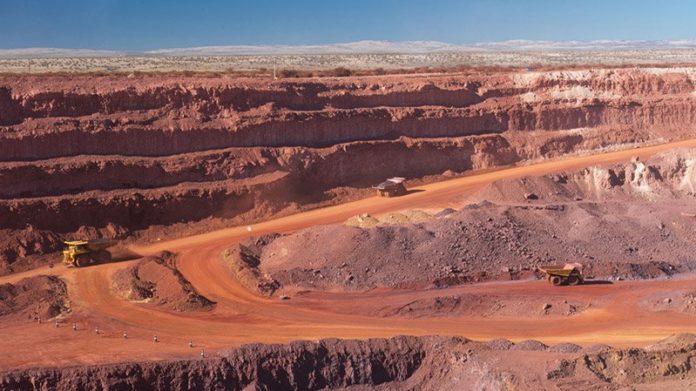
IN early 2018, JSE-listed Kumba Iron Ore announced it was considering a ‘step out’ strategy having in the previous year restructured its Sishen mine in the Northern Cape, a move that cut the operation’s life to 13 years from 17 years previously.
The strategy was about exploring for new resources and included possible acquisitions which Themba Mkhwanazi, CEO of Kumba, said at the time would be opportunistic. That strategy is now bearing some fruit following the announcement in July of its R7bn Kapstevel project – an exploration project that will extend the life of Kolomela, another of Kumba’s mines.
The company also disclosed it was drilling on two other projects – Ploegfontein and Heuningskrans in the Northern Cape. These are recent property acquisitions that, if developed will help Kumba take the average life of its Sishen and Kolomela mines from their current 13 years to 20, an effort which will absorb R200m in exploration budget annually.
Extending the life of iron ore – a commodity the price of which is soaring amid major supply interruptions in Brazil – is a shuddering no-brainer for Kumba and its 70% shareholder, Anglo American.
The Northern Cape is rich in iron ore, which is used in making steel, not to mention other minerals which Mkhwanazi intriguingly said might also fall in the remit of Kumba, in time. So it makes absolute sense to be securing the firm’s future given the health of iron ore’s economics and the type of iron ore Kumba produces. This is high value, so-called ‘lumpy’ iron ore that burns more efficiently in furnaces with a better carbon footprint than ‘fines’ iron ore that is supplied by much of the firm’s competitors.
So with the admittedly unglamorous activity of drilling such a central part of Kumba’s future, it’s fascinating to see the establishment of the firm’s – and possibly South Africa’s – all women drilling crew, handed the responsibility of solving the mining’s firm’s existential questions by Kumba’s drilling contractor, Rosond.
According to Stuart MacGregor, head of exploration for Kumba, the mechanisation of drilling has helped women step out of the shadows because it has removed some of the heavy lifting that may have been a deterrent in the past. Whilst the all-women crew comprise just four of some 100 employees Rosond has on the Kumba project team, there’s an aspiration to have women represent 25% to 30% of the total drilling team in time.
“There’s quite a bit of competitiveness between the women and the men. You know the men don’t want to be outdone,” said MacGregor in an interview. But there are already clear benefits: women operate the machines with more care. This confirms a finding of the South Africa chapter of ‘Women in Mining’ which said women in mining tend not to break machines; that makes them more capital efficient than their male counterparts.
“The work they are doing is diamond drilling, pressure drilling … the first stage of finding resources. There are currently 32 drilling teams working on one project so this is a major push drilling thousands of metres,” said MacGregor.
Exploration drilling doesn’t require tertiary education which means there’s reach into community at exactly the level where new employment has the most benefit for South Africa. “It’s great to see,” said MacGregor: “The women are coming in, drawing a salary and growing in confidence.”
For Kumba, women comprise about 24% of total employees.










